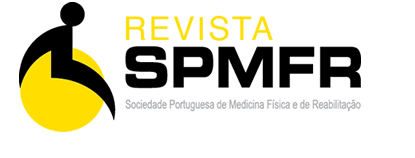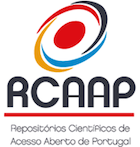Sucesso no Tratamento da Dor Associada a Espasticidade no AVC Medido pela Goal Attainment Scaling
DOI:
https://doi.org/10.25759/spmfr.261Palavras-chave:
Acidente Vascular Cerebral/complicações, Avaliação da Dor, Espasticidade Muscular, Toxinas Botulínicas Tipo A, Tratamento da DorResumo
introdução: A dor associada à espasticidade após o acidente vascular cerebral (AVC) é frequente e interfere com a funcionalidade e qualidade de vida, sendo por vezes difícil o seu tratamento. Atualmente a toxina botulínica tipo A (BoNTA) tem-se mostrado uma alternativa aos tratamentos já estabelecidos, pelo que os autores pretendem avaliar o sucesso do seu tratamento na dor em doentes com sequelas de AVC, medido pela goal attainment scaling.
Material e Métodos: Estudo prospetivo, não intervencional. Coorte de 82 casos tratados entre 01/03/09 e 31/10/12. Incluídos doentes dos 18 aos 85 anos, com diagnóstico de AVC, em que a dor foi um objetivo de tratamento. As escalas usadas foram a escala numérica da dor e a escala de Lickert. A avaliação do sucesso alcançado foi feita com a goal attainment scaling. O tratamento atendeu às características e expectativas de cada caso e os resultados foram analisados com testes paramétricos e nãoparamétricos.
Resultados e discussão: Amostra de 37 homens e 39 mulheres, com idade média de 59 anos. A dor afetou predominantemente o membro superior (77,6%), e o segmento mais frequente foi o ombro (49%). A escala numérica da dor foi usada em 53 casos, sendo o valor médio antes e após o tratamento de 7/10 e 3/10, respetivamente. Em 49 (92%) casos, o valor da escala numérica da dor diminuiu 1 ou mais pontos, tendo a diferença sido significativa (p < 0,001). A escala de Lickert utilizou-se em 23 casos. Após o tratamento 20 (87%) estavam “melhor” ou “muito melhor”, e este resultado foi significativo (p <0,001). O score goal attainment scaling final foi de 52 e a respetiva variação foi de 12 em média. Em 61 (80%) casos esta foi clinicamente significativa (≥ 10). A diferença entre os scores inicial e final foi também significativa (p < 0,001).
Conclusão: A goal attainment scaling foi um instrumento válido, que traduziu o sucesso na concretização de objetivos centrados no doente e qualidade de vida, com boa correlação com os resultados das escalas padronizadas, utilizadas na clínica para medir resultados no tratamento da dor.
Downloads
Referências
Zaza C, Stolee P, Prkachin K, Psych R. the application of goal attainment
scaling in chronic pain settings. Pain Symptom Manage. 1999; 17:55-64.
Harrison R, Field T. Post-stroke pain: Identification, assessment and
therapy. Cerebrovasc Dis. 2015; 39: 190-201. doi: 10.1159/000375397.
O`Donnell M, Diener H, Sacco RL, Panju AA, Vinisko R, Yusuf S, et al.
Chronic pain syndromes after isquemic stroke PRoFESS trial. Stroke. 2013;
:1238-43. doi: 10.1161/STROKEAHA.111.671008.
Watkins CL, Leathley MJ, Gregson JM, Moore AP, Smith TL, Sharma AK.
Prevalence of spasticity post stroke. Clin Rehabil. 2002; 16: 515-22.
Turner-Stokes L, Fheodoroff K, Jacinto J, Maisonobe P, Zakine B. Upper
limb international spasticity study: rationale and protocol for a large,
international, multicenter prospective cohort study investigating
management and goal attainment following treatment with botulinum
toxin A in real-life clinical practice. BMJ Open. 2013; 3. pii: e002230.
doi:10.1136/bmjopen-2012-002230.
Lance JW. Symposium synopsis. In: Feldman RG, Young RR, Koella WP,
editors. Spasticity: Disordered Motor Control. Chicago: Year Book Medical
Publishers; 1980.p. 485-94.
Intiso D. Therapeutic use of botulinum toxin in neuro rehabilitation. J
Toxicol. 2012;2012:802893. doi: 10.1155/2012/802893
Bakheit AM, Fedorova NV, Skoromets AA, Timerbaeva SL, Bhakta BB,
Coxon L. The beneficial antispasticity effect of botulinum toxin type is
maintained after repeated treatment cycles. J Neurol Neurosurg Psychiary.
; 75: 1558-61.
Turner-Stokes L. Goal attainment scaling in rehabilitation; a practical guide.
Clin Rehabil. 2009; 23:362–70.
Kiresuk T, Sherman R. Goal attainment scaling: a general method of
evaluating comprehensive mental health programmes. Community Ment
Health J. 1968; 4:443–53.
Pavone F, Luvisetto F. Botulinum neurotoxin for pain management:
insights from animal models. Toxins. 2010; 2: 2890-913. doi: 10.3390/toxins
Wissel J, Schelosky L, Scott J, Christe W, Faiss JH, Mueller J. Early
development of spasticity following stroke: a prospective, observational
trial. J Neurol. 2010; 257:1067-72. doi: 10.1007/s00415-010-5463-1.
Bakheit M, Zakine B, Maisonobe P, Aymard C, Fhedoroff K, Hefter H, et al.
The profile of patients and current practice of treatment of upper limb
muscle spasticity with botulinum toxin type A: an international survey. Int
J Rehabil Res. 2010; 33:199-204. doi: 10.1097/MRR.0b013e328332f5e0.
Fheodoroff K, Ashford S, Jacinto J, Maisanobe P, Balcaitiene J, Turner-
Stokes L. Factors influencing Goal Attainment in patients with post-stroke
upper limb spasticity following treatment with botulinum toxin A in real-life
clinical practice: sub-analyses from the upper limb international spasticity
(ULIS) – II Study. Toxins., 2015; 7:1192-1205. doi: 10.3390/toxins7041192.
Turner-Stokes L. Goal attainment scaling: a commentary. J Rehabil Med.
; 43: 70–2.
Turner-Stokes L, Baguley I, Graaff S, Katrak P, Davies L, McCrory P, et al.
Goal Attainment Scaling in the evaluation of treatment of upper limb
spasticity with botulinum toxin: a secondary analysis from a double-blind
placebo-controlled randomized clinical trial. J Rehabil Med. 2010; 42: 81–
doi: 10.2340/16501977-0474.
Downloads
Publicado
Como Citar
Edição
Secção
Licença
Os manuscritos devem ser acompanhados de declaração de originalidade, Autoria e de cedência dos direitos de propriedade do artigo, assinada por todos os Autores.
Quando o artigo é aceite para publicação é obrigatória a submissão de um documento digitalizado, assinado por todos os Autores, com a partilha dos direitos de Autor entre Autores e a Revista SPMFR, conforme minuta:
Declaração Copyright
Ao Editor-chefe da Revista da Sociedade Portuguesa de Medicina Física e Reabilitação
O(s) Autor(es) certifica(m) que o manuscrito intitulado:
____________________________________________________________________ (ref.Revista da SPMFR_________) é original, que todas as afirmações apresentadas como factos são baseados na investigação do(s) Autor(es), que o manuscrito, quer em parte quer no todo, não infringe nenhum copyright e não viola nenhum direito da privacidade, que não foi publicado em parte ou no todo e que não foi submetido para publicação, no todo ou em parte, noutra revista, e que os Autores têm o direito ao copyright.
Todos os Autores declaram ainda que participaram no trabalho, se responsabilizam por ele e que não existe, da parte de qualquer dos Autores conflito de interesses nas afirmações proferidas no trabalho.
Os Autores, ao submeterem o trabalho para publicação, partilham com a Revista da SPMFR todos os direitos a interesses do copyright do artigo.
Todos os Autores devem assinar
Data:
Nome(maiúsculas)
Assinatura
Relativamente à utilização por terceiros a Revista da SPMFR rege-se pelos termos da licença Creative Commons “Atribuição – uso Não-Comercial – Proibição de Realização de Obras derivadas (by-nc-nd)”.
Após publicação na Revista SPMFR, os Autores ficam autorizados a disponibilizar os seus artigos em repositórios das suas instituições de origem, desde que mencionem sempre onde foram publicados.
OS AUTORES DEVERÃO SUBMETER UMA DECLARAÇÃO DE CONTRIBUIÇÃO / CONTRIBUTORSHIP STATEMENT INDICANDO O TIPO DE PARTICIPAÇÃO DE CADA AUTOR NO ARTIGO. Mais informações: https://authors.bmj.com/policies/bmj-policy-on-authorship/



